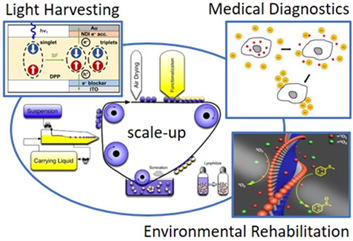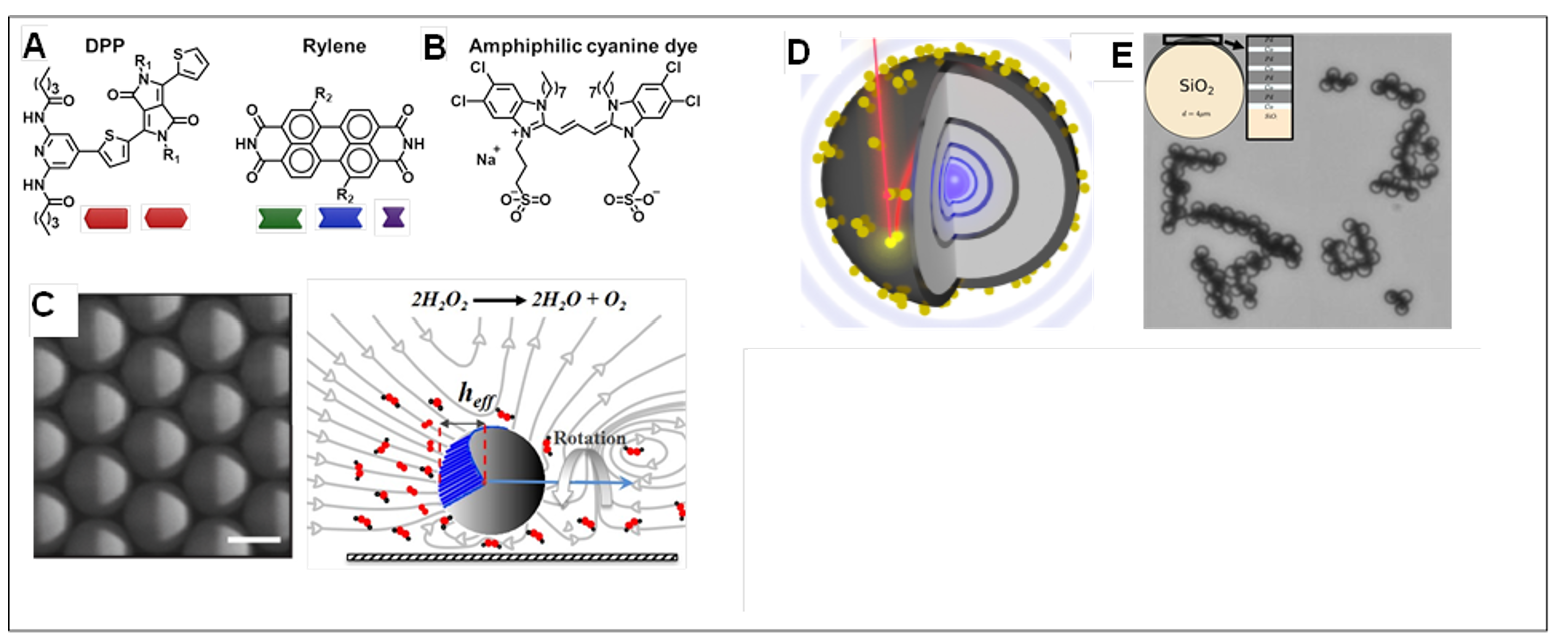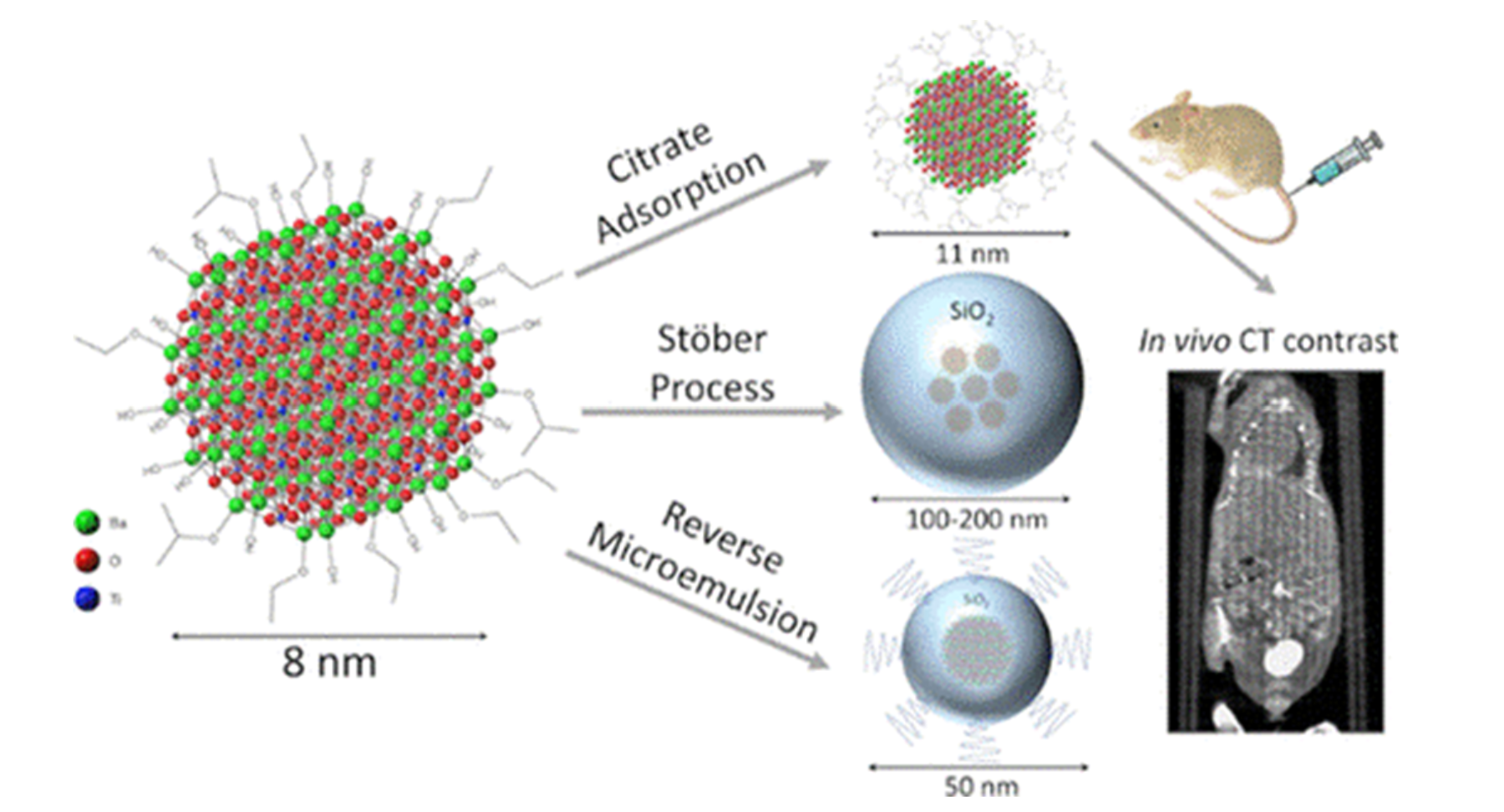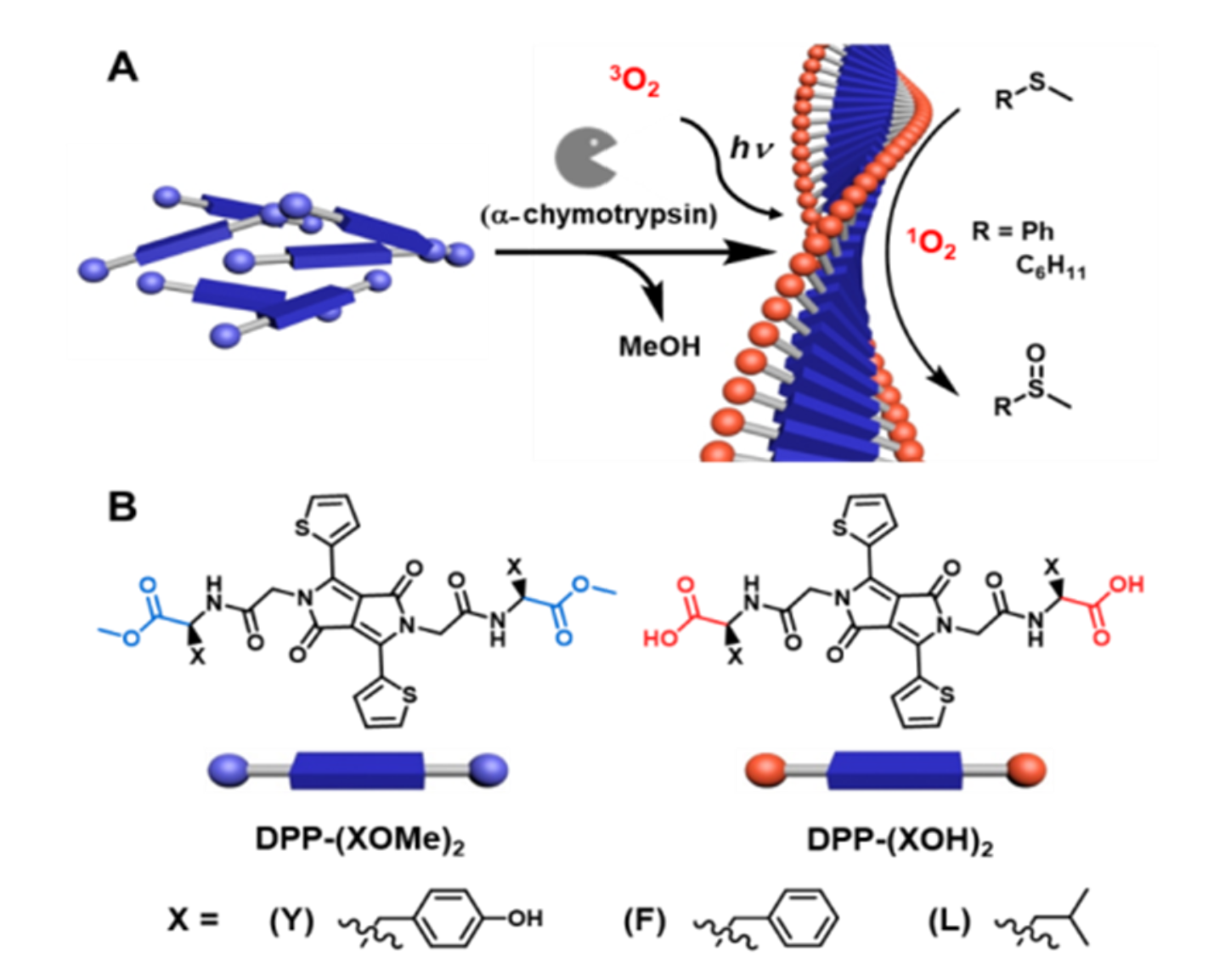Bio-inspired, Re-configurable Materials to Scale
Leader: Ilona Kretzschmar
Team: Kretzschmar, Biddinger, Braunschweig, Cordova, Couzis, Eisele, Giovambattista, Lopez, McGregor, Menon, O’Brien, Tu, Ulijn.
During IDEALS I, Subproject 2 explored materials with bio-inspired design that change their application-relevant properties by adapting to an external stimulus. IDEALS II research focuses on scalability of reconfigurable materials designed in IDEALS I, and further explores specific applications of new bio-inspired materials in three research clusters drawing on the team’s strength and expertise. The efforts address national priorities in energy, health and the environment.

Cluster 1. Reconfigurable Materials for Light Harvesting:A set of scalable bio-inspired materials that are capable of absorbing light and enable exploitation of the absorption events for energy production, propelling motion, or, diagnosing disease states will be explored. Braunschweig and Eisele will explore synergistic effects of assembly and adsorption on electron transfer efficiency (ETE) in organic materials with photovoltaic applications. Menon and Biddinger will examine the dynamics of excited state decay that results in electron transfer in two unique supramolecular photoactive systems.1 Further, Kretzschmar and Menon will investigate the optical-force driven propulsion of Janus particles (JPs) with multi-layered magnetic caps2 that can be used as cargo delivery vehicles and for studying collective behavior in fluids. Couzis and O’Brien will synthesize nanoparticle systems and test as Cerenkov imaging probes.

Reconfigurable and addressable materials systems: A) Supramolecular light harvesting systems.3 B) Light harvesting systems.4 C) 2.4 mm patchy particles.5 D) Onion-like particles.6 E) mlc-Janus particles.7
Cluster 2. Medical Diagnostics and Cancer Therapy: Medical diagnostics and cancer therapy require synthesis and characterization of agents that can be directed and addressed externally by gradients or change their configuration as a result of external stimuli. Testing of JPs conjugated with enzymes has shown promising results.8 In IDEALS II, Kretzschmar and Cordova will focus on modeling and design of microfluidic devices to study chemotaxis in conjunction with experimental tests. One of the critical challenges is that organs compete with the tumor for nanoparticles.9 To address this, Ulijn and O’Brien plan to investigate a stimuli-activated motif on nanomaterials to enhance their cancer cell binding propensity. A different aspect of therapeutics is storage of live cells and proteins for later use through the process of cryopreservation. But formation of ice may lead to cell death and protein damage. Cryoprotectants may circumvent ice formation, but are also toxic.10 Lopez and Giovambattista will use non-equilibrium molecular dynamics simulations and explore if high-density amorphous ice can be used as a cryoprotectant environment for biomolecules without the need of additives

Design of complex oxide perovskite nanoparticles for biomedical imaging.
Cluster 3. Sustainability and Environmental Rehabilitation: The use of bio-inspired, reconfigurable materials will be extended to sustainability and environmental rehabilitation. For example, typical catalysts involve toxic heavy metals and organic solvents. Braunschweig and Ulijn recently reported a new hydrogel photocatalyst.11 In IDEALS II, the catalytic scope of the gel will be expanded by increasing the library of catalysts based on peptide/chromophore hydrogels, and, if possible, demonstrate asymmetric induction. Tu and Biddinger will explore the ability of polypeptide complex coacervates to selectively adsorb CO2. Ulijn and Tu will continue their investigation of tripeptides to emulate biological photocatalytic processes such as denitrification via photocatalysis, where N2O can be reduced to N2 using a FeP:HYF co-assembly. Lopez and McGregor propose to design and study the self-assembly of proton wires of short aromatic peptides experimentally and computationally.

Visible-light photo-oxidation enabled by a supramolecular hydrogel.
References:
- M. Levine, S. Biswas, A. B. Braunschweig, Photoactive organic material discovery with combinatorial supramolecular assembly, Nanoscale Adv., 1, 3858 (2019).
- A. Victoria-Camacho, R. A. DeLaCruz-Araujo, I. Kretzschmar, and U. M. Córdova-Figueroa, SelfAssembly of Magnetic Colloids with Radially Shifted Dipoles, Soft Matter 16, 2460 (2020).
- M. Levine, C. Schierl, B. S. Basel, M. Ahmed, B. A. Camargo, D. M. Guldi and A. B. Braunschweig, Singlet Fission in Combinatorial Diketopyrrolopyrrole–Rylene Supramolecular Films, J. Phys. Chem. C 123 1587 (2019).
- M. Eisele, C. W. Cone, E. A. Bloemsma, S. M. Vlaming, C. G. F. van der Kwaak, R. J. Silbey, M. G. Bawendi, J. Knoester, J. P. Rabe and D. A. Vanden Bout, Utilizing redox-chemistry to elucidate the nature of exciton transitions in supramolecular dye nanotubes, Nat. Chem. 4 655 (2012).
- Jalilvand, A. B. Pawar and I. Kretzschmar, Experimental Study of the Motion of Patchy Particle Swimmers Near a Wall, Langmuir 34 15593 (2018).
- Abad-Arredondo, F. J. García-Vidal, Q. Zhang, E. Khwaja, V. M. Menon, J. Grimm and A. I. Fernández-Domínguez, Fluorescence Triggered by Radioactive b Decay in Optimized Hyperbolic Cavities, Phys. Rev. Appl. 14 024084 (2020).
- W. Long, Doctoral, The City College of New York, 2019.
- E. Perez-Salas, I. Kretzschmar, M. Torres-Lugo, and U. M. Cordova-Figueroa, Synthesis and Dynamics of Au-SiO2 Biocompatible Nanomotors for Medical Applications, unpublished.
- Yu, and J. Zheng, Clearance Pathways and Tumor Targeting of Imaging Nanoparticles, ACS Nano. 9, 6655 (2015).
- P. Best, Cryoprotectant Toxicity: Facts, Issues, and Questions, Rejuvenation Res. 18, 422 (2015).
- Biswas, M. Kumar, A. M. Levine, I. Jimenez, R. V. Ulijn, A. B. Braunschweig, Visible-Light Photooxidation in Water by 1O2-Generating Supramolecular Hydrogels,Chem. Sci. 11, 4239 (2020).